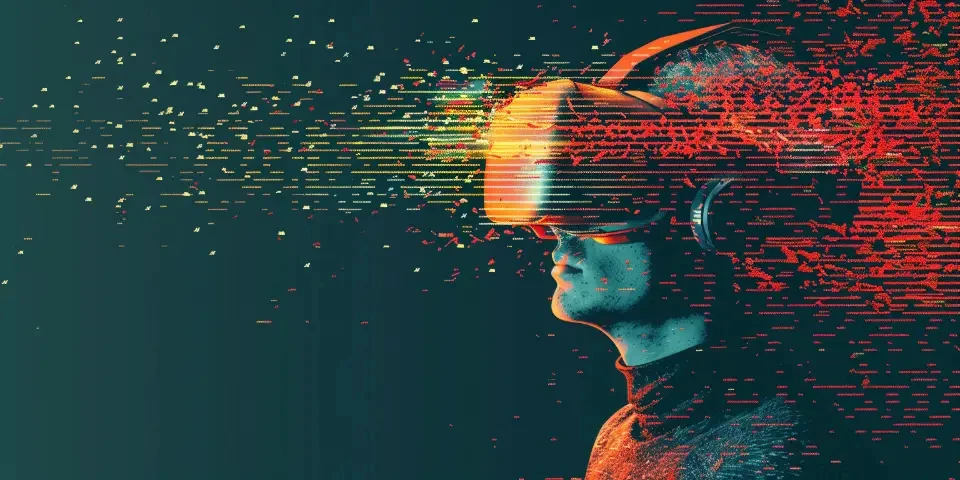Unleash Your Creativity with AI-Backed Graphic Design Tools
Graphic design is an essential component of modern marketing and communication strategies. However, creating visually appealing and unique designs can be a daunting task, especially for those who lack artistic skills or experience. Fortunately, advancements in artificial intelligence (AI) have given rise to a new generation of graphic design tools that can unleash your creativity in ways never before imagined.
1. AI-powered Templates and Design Suggestions
Gone are the days of starting a design from scratch. AI-backed graphic design tools offer a plethora of pre-designed templates that can be easily customized. These templates serve as a strong foundation, enabling even beginners to create professional-looking designs effortlessly. Furthermore, AI algorithms analyze your design preferences and propose suggestions to enhance your creations, providing valuable guidance throughout the design process.

One of the leading AI-powered design platforms is Canva, which offers a vast library of templates and design elements for all types of projects. Canva's AI system suggests relevant fonts, color schemes, and layouts based on your design choices, helping you create visually stunning designs without the need for extensive design skills.
2. Intelligent Object Removal and Background Editing
Removing unwanted objects or backgrounds from images is often a time-consuming and challenging task. However, AI-based graphic design tools have made this process much simpler. With just a few clicks, these tools can automatically detect and remove objects or replace backgrounds, saving you valuable time and effort.
Adobe Photoshop, a widely renowned graphic design software, recently introduced the "Content-Aware Fill" feature powered by AI. This tool intelligently analyzes the surrounding area of an object and fills in the removed portion seamlessly, resulting in a clean and flawless design.
3. Smart Color Palette Suggestions
Choosing the right color palette is crucial in graphic design, as it sets the tone and evokes emotions. AI-backed graphic design tools assist in this process by providing smart color palette suggestions based on your design's theme or objective.
Coolors, an AI-driven color scheme generator, offers an intuitive and simple interface to select harmonious color combinations. By adjusting a few sliders, you can generate a variety of color schemes and explore different options that align with your design vision.
4. Automated Image Enhancement
AI-powered graphic design tools excel in image enhancement, enabling you to transform ordinary photos into extraordinary masterpieces. These tools leverage complex algorithms to analyze and enhance various aspects of an image, such as brightness, contrast, and saturation, resulting in stunning visuals.
One notable platform in this domain is Pixlr. With its AI-based image-enhancement tools, Pixlr automatically adjusts and optimizes images to make them visually appealing. Whether you want to polish a product photo or enhance a portrait, Pixlr's AI algorithms can enhance the image with just a few clicks.
5. AI-driven Typography Suggestions
Typography plays a vital role in graphic design, capturing attention and conveying messages effectively. AI-assisted graphic design tools analyze the content and concept of your design, offering typography suggestions that resonate with your intended audience.
Typ.io is an AI-powered typography tool that provides a collection of fonts used by professionals in various design projects. By simply entering a keyword or uploading an image, Typ.io intelligently generates typography recommendations that align with your design objectives.
6. Time-saving Design Automation
AI-integrated graphic design tools automate repetitive and mundane design tasks, allowing designers to focus on the creative aspects of their projects. These tools use machine learning algorithms to recognize patterns and generate designs in a fraction of the time it would take manually.
Designhill's AI Logo Maker is an excellent example of design automation. Using AI, Designhill generates logo designs based on your preferences and industry, eliminating the need for extensive back-and-forth revisions. This saves valuable time and ensures you receive a logo that fits your brand identity.
7. Seamless Integration with Design Collaboration
Collaboration among design teams is vital for efficient project management. AI-backed graphic design tools streamline this process by providing seamless integration with design collaboration platforms. This allows multiple designers to work simultaneously on a project, enhancing productivity through real-time feedback and coordination.
Figma, an AI-integrated design collaboration platform, enables designers to work together on the same design file simultaneously. Its powerful AI algorithms help identify conflicts and suggest resolutions, ensuring smooth collaboration and eliminating potential design clashes.
Frequently Asked Questions:
Q: Are AI-backed graphic design tools suitable for beginners?
A: Yes, AI-backed graphic design tools are designed to cater to beginners and professionals alike. Their intuitive interfaces and extensive libraries of templates simplify the design process and provide valuable guidance, making them accessible and user-friendly for individuals with limited design experience.
Q: Will AI replace human graphic designers?
A: While AI has greatly augmented the graphic design process, it is unlikely to replace human designers entirely. AI-backed tools assist designers in automating repetitive tasks, providing suggestions, and enhancing efficiency. However, human creativity, innovation, and aesthetic judgment remain crucial in developing unique and emotionally impactful designs.
Q: Can AI understand and incorporate personalized design preferences?
A: Yes, AI algorithms can learn and adapt to individual design preferences. As designers use AI-backed tools, the algorithms analyze their choices and patterns, allowing the tools to better understand their design style and tailor suggestions accordingly, creating a personalized workflow.
References:
1. Canva: https://www.canva.com/
2. Adobe Photoshop: https://www.adobe.com/products/photoshop.html
3. Coolors: https://coolors.co/
4. Pixlr: https://pixlr.com/
5. Typ.io: https://typ.io/
6. Designhill's AI Logo Maker: https://www.designhill.com/tools/logo-maker
7. Figma: https://www.figma.com/
Explore your companion in WeMate